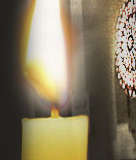Get to know the Saint of Miracles
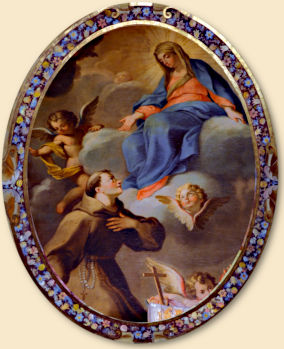
St. Anthony was born in 1195 in Lisbon, Portugal.
Baptized as Fernando, he changed his name to Anthony in homage of the superior of the Franciscan Abbey of the Olivares who was martyred in Morocco along with other Franciscan friars.
Today, St. Anthony is known as the patron saint of the poor, is invoked as protector and finder of lost things, and his intercession is sought for a good marriage. Abundant examples and stories testify to his miraculous powers.
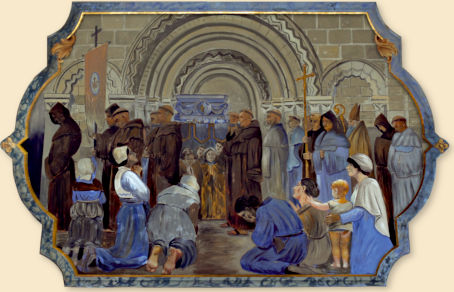
The countless miracles of Saint Anthony
St. Anthony owes his popularity to the many prodigies and miracles that occurred during his life and after his death.
Christ gave the gift of miracles to the first preachers of the Gospel to mark His word with the Divine Seal! It was necessary to prove the doctrine of the Divine Master with unquestionable signs and thus lead the unbelieving to the true religion.
Anthony also exercised his ministry with the unbelieving. He had to defend the dogmas of our Catholic Faith many times against the heretics –Cathars and Albigensians – that swarmed the south of France and the north of Italy. Theological reasoning was not enough to convince these souls full of prejudice against the Faith, so St. Anthony resorted to the irresistible argument of the miracle.
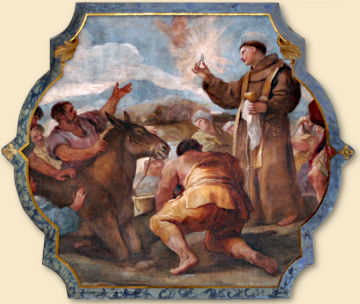
The donkey that knelt before the Blessed Sacrament
Biographers of St. Anthony – including the renowned Jean Rigaud– relate how one day he argued with a heretic. The unhappy and unfortunate man refused to admit the mystery of the Transubstantiation, because after the consecration at Mass he did not perceive any visible change in the Eucharistic species – the bread and wine. Anthony presented the evidence from Sacred Scripture and from Tradition in vain; all of his efforts were thwarted by his interlocutor’s obstinacy.
St. Anthony changed tactics….
“You have with you the donkey that you are riding,” St. Anthony said. “I will present a consecrated Host before the donkey. If the donkey kneels before the Blessed Sacrament will you admit the Real Presence of Our Divine Savior in the Eucharist?
“Of course, I will,” stated the unbeliever as he relished the thought of St. Anthony’s coming embarrassment. They both agreed to meet 3 days later to perform the test. In preparation for the test, the heretic deprived the donkey of food until the meeting while St. Anthony prepared himself through redoubled prayer.
At the appointed hour on the scheduled day, Anthony carried the monstrance containing the Sacred Host from a nearby church to the town’s public square. The unbeliever arrived in the public square with his hungry donkey as a throng of onlookers gathered to witness the spectacle.
With a victorious smile upon his lips, the man put a sack of oats before the donkey. But to his surprise, the donkey did not eat, but crossed the square and knelt before the Blessed Sacrament held by St. Anthony. The donkey remained kneeling until Our Lord in the Host granted it permission to rise.
It is easy to imagine the result this miracle produced. The heretic kept his word, acknowledge the Real Presence of Our Lord Jesus Christ in the Holy Eucharist, and converted. Several of his fellow heretics also abjured their errors.
Juan Rigauld does not mention the exact place where this event occurred. However, several sources indicated Rimini, Italy, was the place of this miracle. In 1417, a chapel was built in Rimini to commemorate this great event. Many years later, a column was erected on the exact spot where the miracle took place.
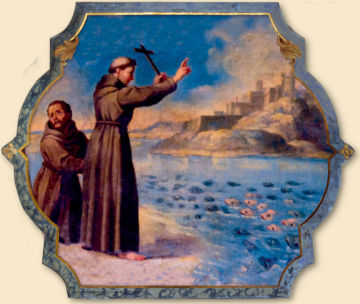
The Sermon to the Fish
St. Anthony performed another great miracle in the same city. Rimini was a center of heretical activity. The leaders of the city had ordered everyone to ignore St. Anthony, hoping that no one would be present for him to preach to. Anthony was meet with silence and rejection as he tried to do good for the townspeople.
As the heretics of the town mocked him, St. Anthony stated: “Since men do not want to hear the world of God, I will preach to the fish!”
Anthony walked along praying and reflecting upon what had happened. As he walked outside of the town, he came to the mouth of the Marecchia River where it flows into the Adriatic. There he began to address the crowds, not of people but of fish.
He called out, “You, fish of the river and sea, listen to the Word of God because the heretics do not wish to hear it.” Suddenly there were thousands of fish neatly arranged in rows, all pushing their heads through the surface of the water as if they were straining to listen to every one of Anthony’s words.
The people of Rimini, seeing this miracle, gathered to listen to Anthony. What began with simple interest in an extraordinary event turned into a passionate conviction that Anthony was speaking to their very hearts. They were so moved by Anthony’s words, by his call to conversion, that they abandoned their heresy and returned to the Church.
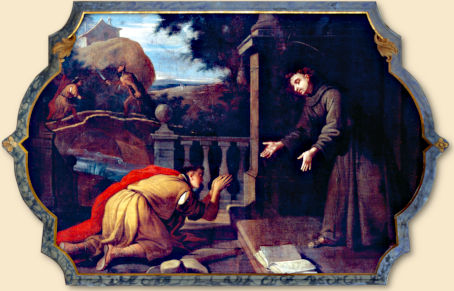
Finding Lost Objects
Throughout the centuries, St. Anthony has demonstrated to his devotees the wonderful power of his intercession. He has granted and continues to grant great favors to those who invoke him with confidence. Abundant stories of miracles and answered prayers are found in the many great biographies devoted to this saint.
The list of miracles is astounding: small favors, cures, conversions, and even raising the dead back to life. The great St. Anthony brought his own nephew back to life after he accidentally drowned in the Tagus River.
One of the things that has made St. Anthony so popular is the number of lost objects that have been found, sometimes against all hope.
One such incidenct occurred in the 16th century with Bishop Inigo Manrique, the bishop of Cordoba, Spain. He had lost his pastoral ring which was of great value. He invoked the intercession of St. Anthony to help him find this precious jewel; but all was in vain. One day, the bishop told his secretary about his misfortune. “A lot of people ask me to thank St. Anthony on their behalf for his intercession and the miracles he has performed for them,” he told his secretary, “but at the moment I am not happy with him.” He had just finished pronouncing these words when and invisible hand dropped the lost ring on the table right in front of the bishop. This event deeply impressed all those at the table who gave great thanks to the illustrious miracle worker.
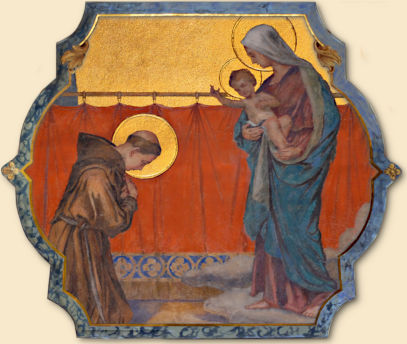
The Child Jesus, the Virgin Mary and Saint Anthony
St. Anthony had great devotion to the Blessed Virgin Mary and she visibly came to the aid of her devoted and faithful servant on a number of occasions. Twice, in Brive, France, and in Padua, Italy, the demon assaulted the ardent preacher who had saved so many souls. During these diabolical attacks, Anthony turned to Mary and recited one of his favorite hymns, “O Glorious Lady.” The Queen of Heaven appeared to him amid a dazzling light and put the devil to flight.
Our Divine Savior also visited St. Anthony. According to an ancient tradition, St. Anthomy visited the home of the Lord of the Chateauneuf Lismoges region in France. This gentleman, amazed by the saint’s reputation, wanted to observe the behavior of St. Anthony. At nightfall, he indiscreetly peeked through the keyhole into St. Anthony’s room. He was absolutely astonished by what he saw: The Infant Jesus resting in St. Anthony’s arms!
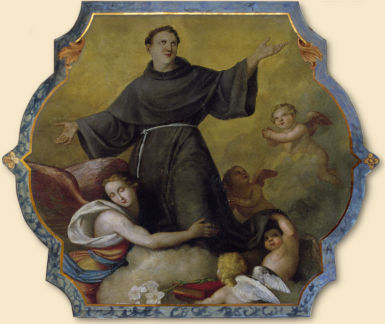
Death and Canonization
St. Anthony dedicated himself to writing sermons for the feasts of all the great saints and for each Sunday of the year until his death on June 13, 1231, at the age of 36.
His life of complete dedication to God, plus the greatness of his miracles, resulted in his canonization by Pope Gregory IX just 11 months after his death.
In 1946, Pope Piux XII proclaimed him a “Doctor of the Church” with the title of “Evangelical Doctor”.

